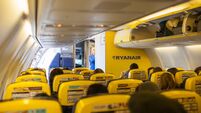Jupiter crash a dramatic end to space mission
Sunday night’s dramatic end to the Galileo mission was planned to avoid any chance of an unwanted impact with moons that may harbour water and life.
The spacecraft, travelling at nearly 108,000 mph, was torn apart and vaporised by the heat and friction of its fall through the clouds after it dove into the atmosphere at 8.57pm on Sunday night as planned.
The destruction of the spacecraft marks the end of an astonishing odyssey that far exceeded the expectations of scientists.
Galileo produced a wealth of data about Jupiter and its 16 moons. In particular, it provided strong evidence of a subsurface ocean on Europa, one of the four largest moons known as the Galilean satellites.
Instruments on the spacecraft also hinted at other hidden oceans on sister moons Callisto and Ganymede.
Scientists believe the moons’ oceans, warmed by the tidal forces of Jupiter’s gravity, might provide suitable conditions for life.
Mission controllers wanted to avoid any chance of the moons being contaminated by bacteria hitching a ride on Galileo. So to avoid an impact with one of the satellites, they aimed the spacecraft at Jupiter.
From the time of its launch in 1989 to its destruction, the spacecraft travelled almost three billion miles through space.
The primary mission was supposed to last only two years, but was extended.














